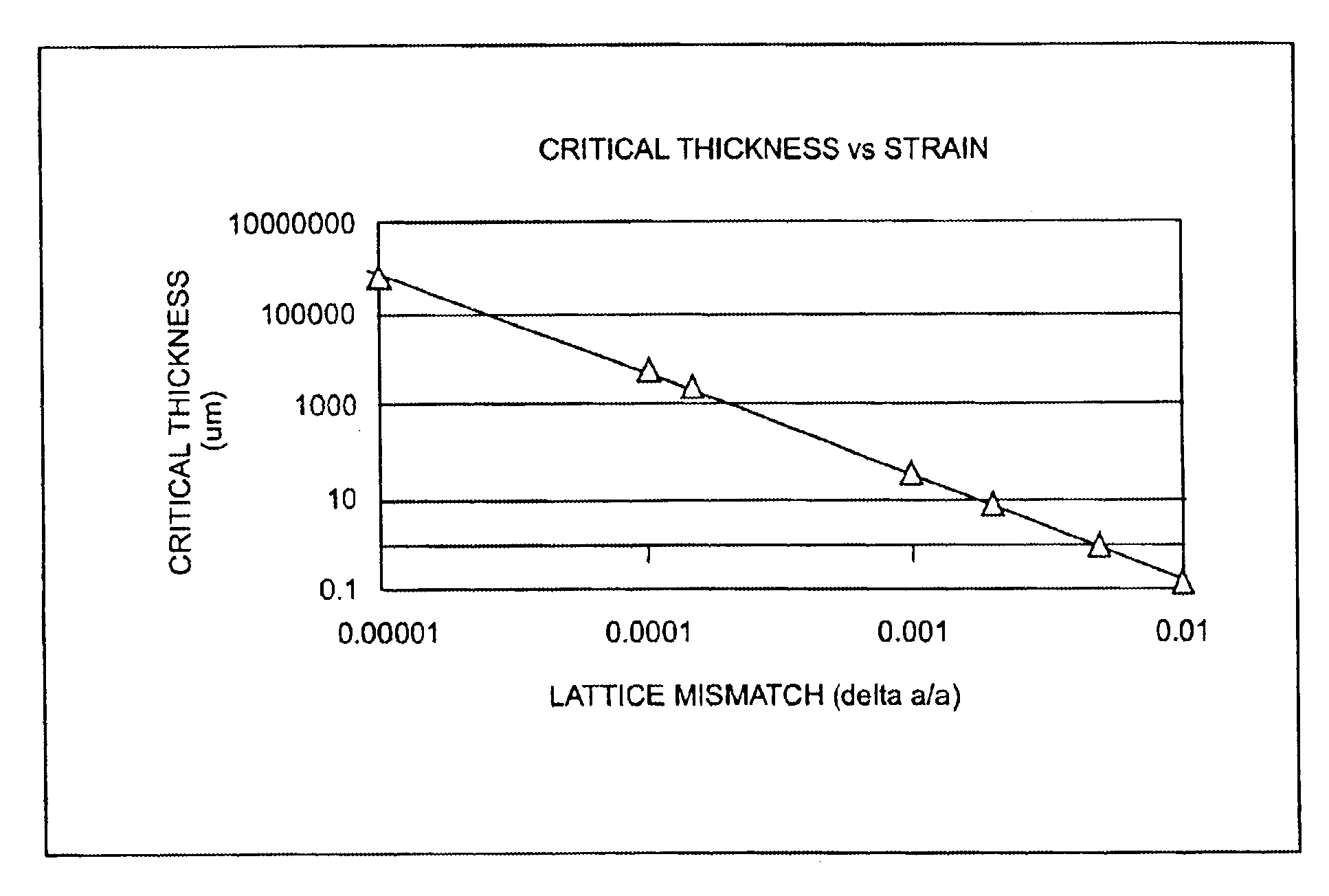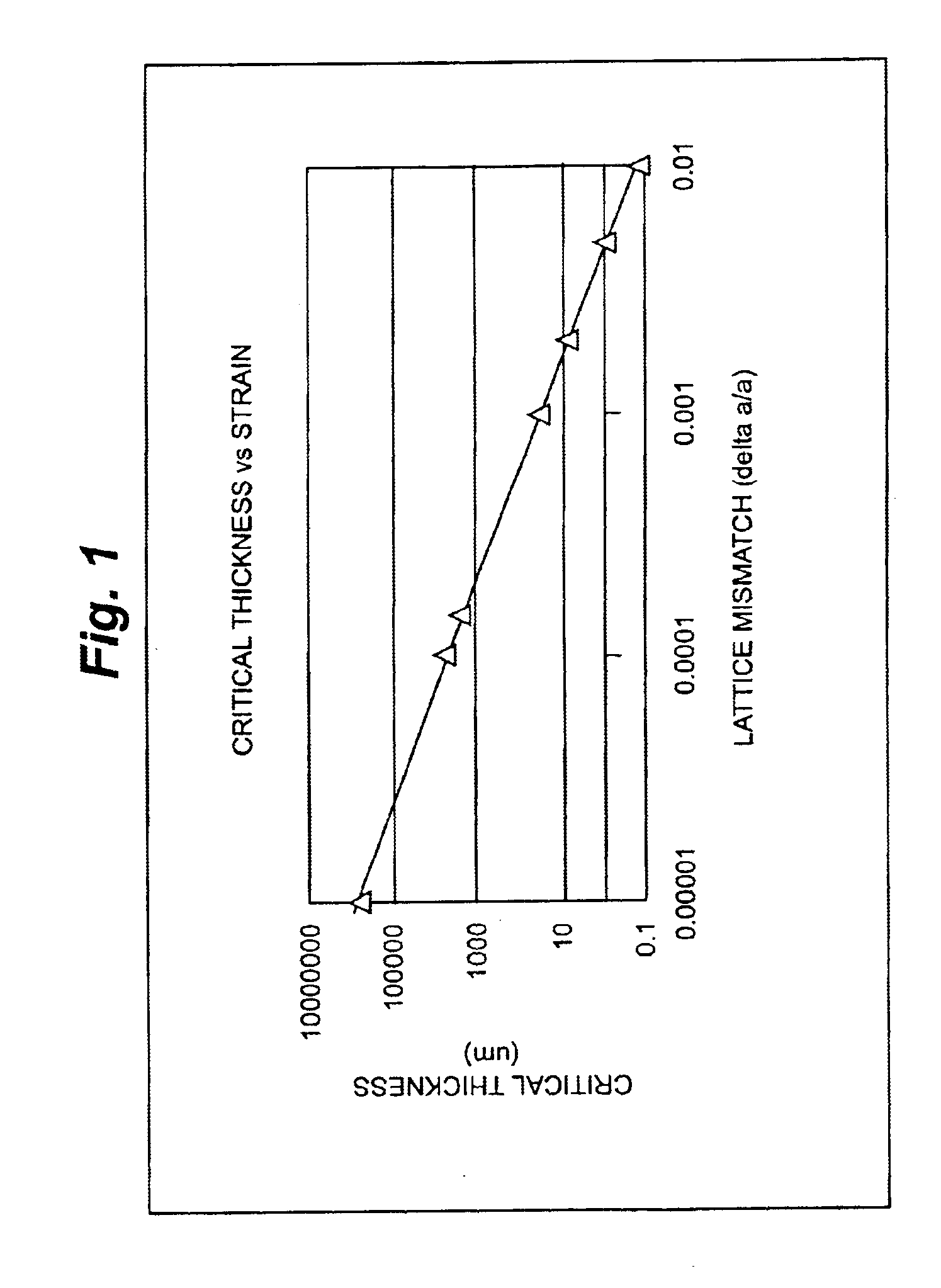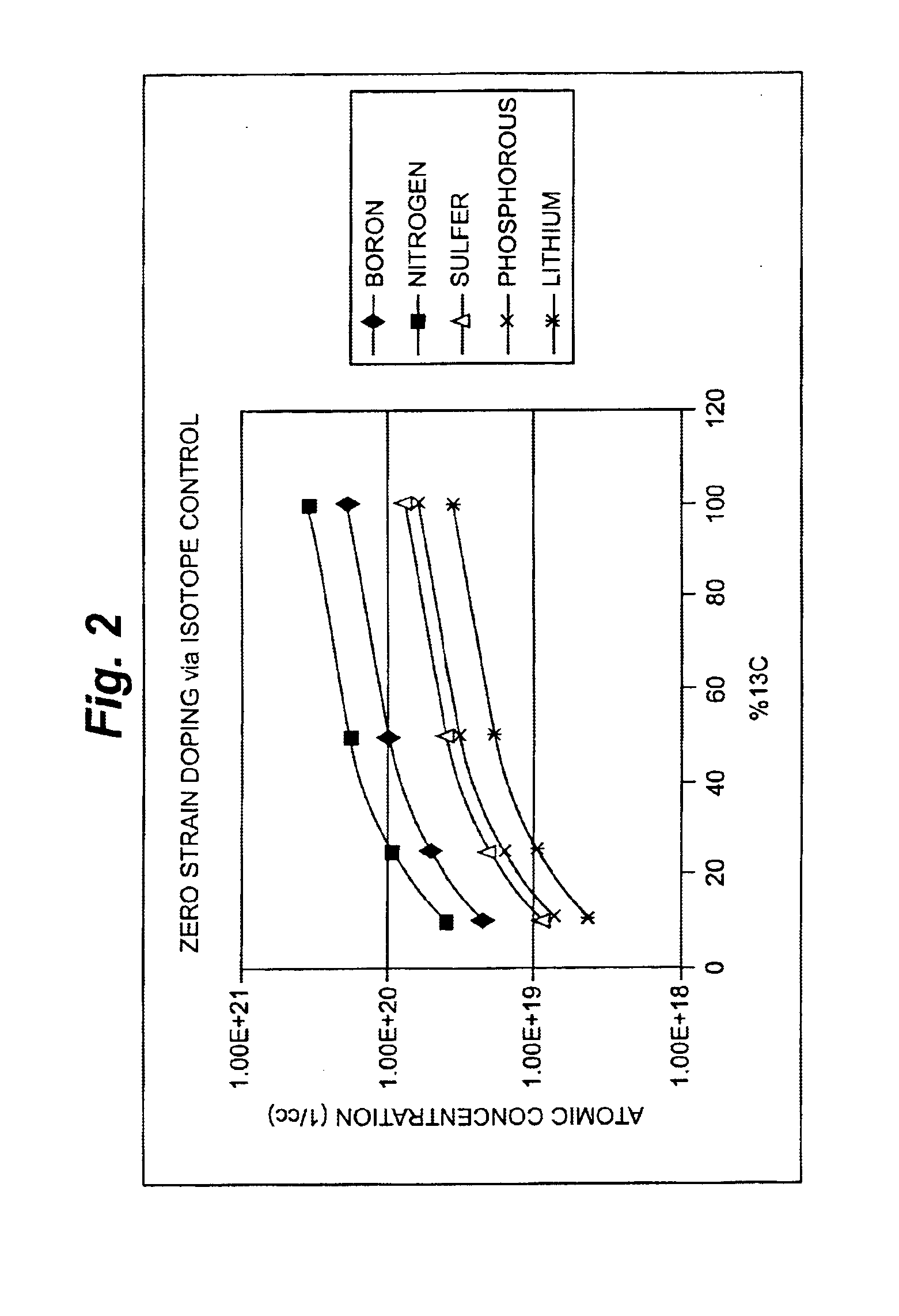Tunable CVD diamond structures
- Summary
- Abstract
- Description
- Claims
- Application Information
AI Technical Summary
Benefits of technology
Problems solved by technology
Method used
Image
Examples
examples
Selection of the appropriate technique to use to determine the isotope content of a particular diamond will depend on the required accuracy and the availability of a consumable sample, as is discussed above. The following non-limiting examples are provided in Table 6 below to illustrate the present invention. In other words, while the examples are provided to demonstrate the invention, they are not provided to limit the invention only as such.
Examples 1-25 illustrate the use of the present invention using various types of CVD diamond growth techniques including: hot filament, microwave plasma, DC plasma, rf plasma, arc jet and flame. Examples 1, 3, 5, 11, 12, 13, 14, 16, 17, 18, 19, and 20 illustrate the growth of undoped 12C diamond single crystal on natural, HPHT synthetic diamond and CVD synthetic diamond substrates. Examples 2 and 5 illustrate growth of undoped 13C single crystal diamond layers. Examples 4, 8, 10, 24, and 25 illustrate single and multiple boron doped layers on 1...
example 1
Growth of (100) Oriented Single Crystal Diamond on Type IA Natural Diamond Using the Hot Filament Method
A natural type IA diamond single crystal is sliced on a diamond impregnated saw to yield a substrate of (100) orientation. The substrate is polished with diamond grit suspended in olive oil and impregnated into a cast iron plate to achieve a surface which is free of grooves, scratches or digs. This substrate is then cleaned with hot detergent in an ultrasonic cleaner, rinsed in acetone and dried. Following cleaning the substrate is placed in a hot filament chemical vapor deposition reactor (HFCVD) having a substrate heater consisting of a tungsten filament held within a molybdenum holder and having a rhenium filament approximately 10 mm from the substrate. The reactor is evacuated to a pressure of less than 10 millitorr and then backfilled to a pressure of 40 torr with hydrogen having a purity of 99.999% and at a rate of 100 sccm.
Power is applied to the rhenium filament to achieve...
example 2
Growth of (100) Oriented Single Crystal Diamond on Type IIA Natural Diamond Using the Hot Filament Method
A natural type IIA diamond single crystal is sliced on diamond impregnated saw to yield a substrate of (100) orientation. The substrate is polished with diamond grit suspended in olive oil and impregnated into a cast iron plate to achieve a surface which is flat and free of grooves, scratches or digs. The substrate is then cleaned with hot detergent in an ultrasonic cleaner, rinsed in acetone and dried. Following cleaning the substrate is placed in a hot filament chemical vapor deposition reactor (HFCVD) having a substrate heater consisting of a tungsten filament held within a molybdenum holder and having a rhenium filament approximately 10 mm from the substrate. The reactor is evacuated to a pressure of less than 10 millitorr and the backfilled to a pressure of 40 torr with hydrogen having a purity of 99.999% and at a rate of 100 sccm.
Power is applied to the rhenium filament to ...
PUM
 Login to View More
Login to View More Abstract
Description
Claims
Application Information
 Login to View More
Login to View More - R&D
- Intellectual Property
- Life Sciences
- Materials
- Tech Scout
- Unparalleled Data Quality
- Higher Quality Content
- 60% Fewer Hallucinations
Browse by: Latest US Patents, China's latest patents, Technical Efficacy Thesaurus, Application Domain, Technology Topic, Popular Technical Reports.
© 2025 PatSnap. All rights reserved.Legal|Privacy policy|Modern Slavery Act Transparency Statement|Sitemap|About US| Contact US: help@patsnap.com



